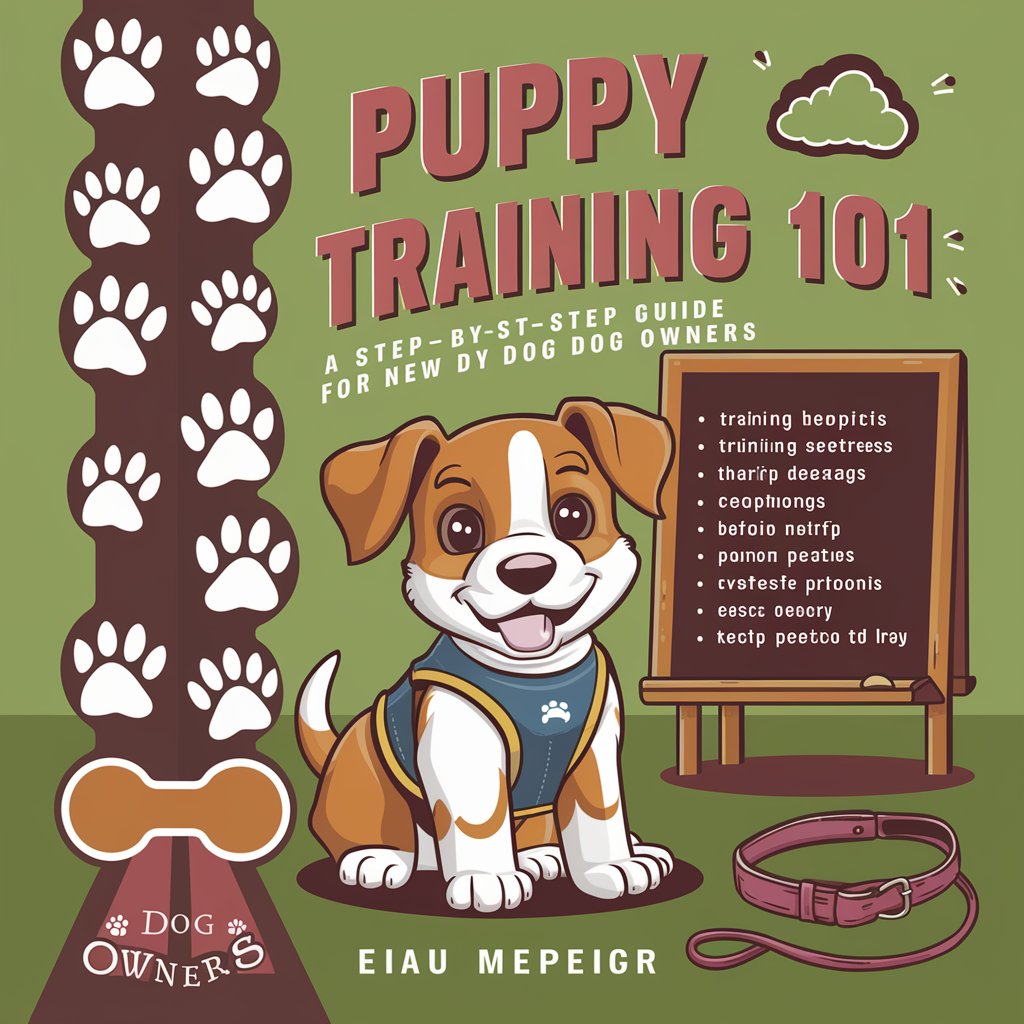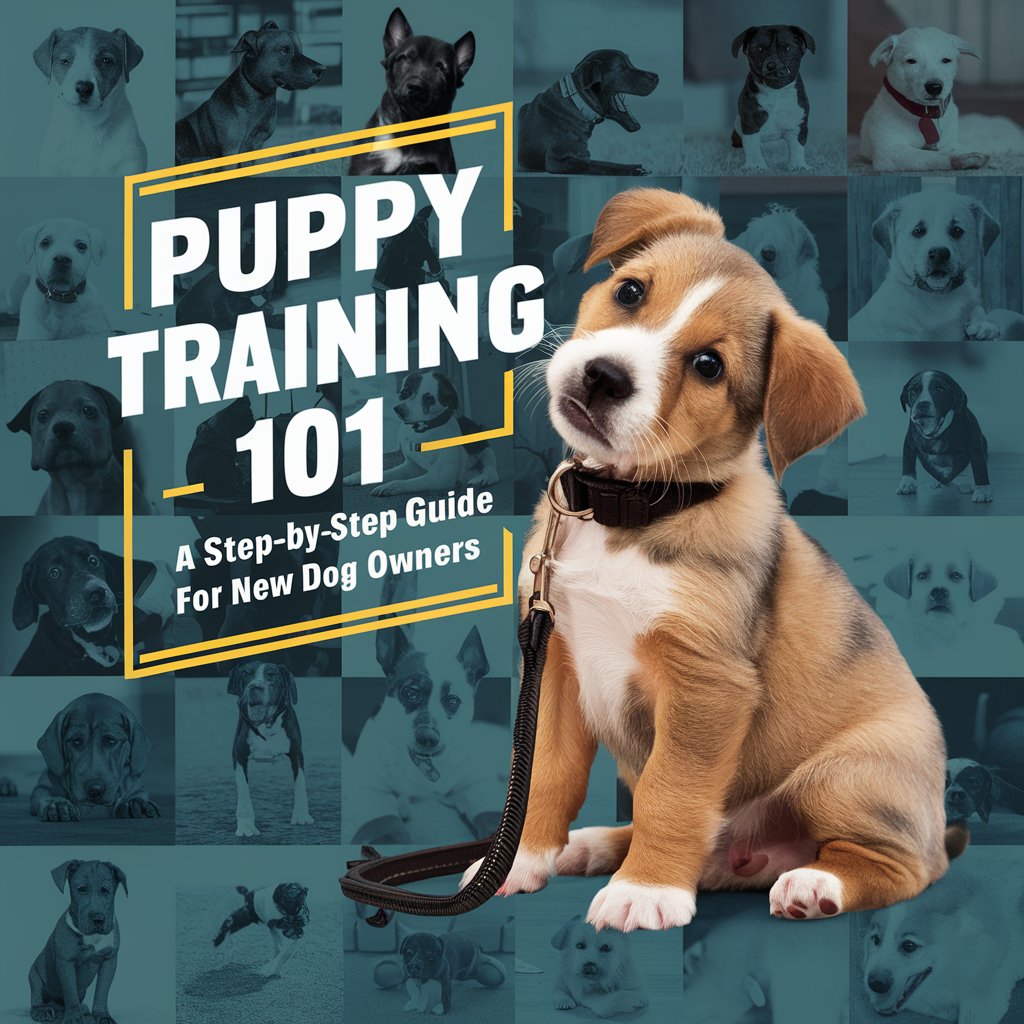Though it comes with obligations, bringing a new puppy into your house is an exciting and happy event. Your puppy will grow into a happy and well-adjusted adult dog only with appropriate training. From the foundations to more sophisticated methods, this detailed book will enable new dog owners negotiate the core of puppy training.

First chapter: getting ready for your puppy; puppy-proofing your house
Remove any breakable objects, home chemicals, and hazardous goods; next, fasten loose wires. Provide your puppy a secure area specifically for relaxation and exploration.
Advice: Block off places off-limits with baby gates and make sure your puppy has access to safe chew toys.
Compiling Necessary Materials
Before bringing your puppy home, be sure you have all you need—a crate, bed, food and water bowls, collar, leash, ID tags, toys, and grooming items.
Advice: Select premium puppy food and keep some rewards close at hand for training.
organizing a Routine:
Plan your daily feeding, toilet breaks, playtime, and training schedule consistently. This enables your dog to feel safe and to know what to expect.
Advice: To provide your dog stability, keep to consistent toilet breaks and food times.
The First Few Days: Introducing Your Puppy to Their New Home
let your puppy investigate their new surroundings at their own speed. Show them where they will eat, their assigned sleeping space, and a restroom.
Advice: Keep the first contacts peaceful and friendly to prevent overwhelming your dog.
Training in crate building:
Potty training benefits from crate training, which also gives your dog a safe place. Gradually introduce the crate and use food and toys to make the experience joyful.
Advice: Never discipline your dog using the kennel. Initially keep crate sessions brief; then, progressively extend the time.
Developing Potty Training:
A spotless house depends on regular potty training. Especially after meals, playing, and nap times, take your puppy outside often.
Advice: Reward your dog right away when they eliminate outside using a consistent cue word like “go potty”.
Chapter 3: Simple Training Commands
Sit:
One of the fundamental commands that will benefit other training is teaching your dog to seat. Holding a goodie at your puppy’s nose, then move it up to induce sitting.
Advice: Reward your dog with praise and a treat as soon as its bottom touches the ground.
Rest:
Once your puppy masters “sit,” you can teach “stay.” Sit them; then, show your open palm and say “stay.” Steep back, wait a few seconds, then come back to reward them.
Advice: Gradually extend the “stay” command’s length and scope; always praise your puppy for maintaining the posture.
Come.
Safety of your puppy depends on their being taught to come when called. Speak in a happy voice, call your puppy’s name then “come,” and treat them when they get to you.
To guarantee dependability, practice in a safe space and progressively add distractions.
Downs:
Instruction in “down” promotes impulse control. Start with your puppy seated, then gently lower a reward to their nose from where you are seated.
Advice: Reward your dog right away as its body lowers under the instruction “down.”
Chapter 4: Socialization: Introducing New Experiences to Your Puppy
Development of your dog depends on socializing. Show them many people, animals, settings, sounds, and items.
Advice: Keep experiences slow and positive. Reward your puppy for confident and calm conduct.
Puppy Classes and Playdates:
To teach your puppy fundamental socializing and obedience, register it in a reliable puppy class. Plan playdates including other vaccinated dogs.
Advice: Watch play to make sure it’s good and safe. Promote soft play and step in if needed.
Managing and polishing:
Describe how you want your puppy to be handled and groomed. Train routinely touching their paws, ears, and lips.
Advice: Initially keep grooming sessions short and use treats and compliments to make them enjoyable.
Chapter 5: Handling Typical Behavioral Problems: Chewing and biting
Puppies explore the world using their lips, but it’s crucial to correct biting and chewing behavior. Arrange suitable chew toys and discourage furniture or hand biting.
Advice: Say a strong “no” and substitute a chew toy. When your puppy chews on appropriate objects, praise them.
Hopping:
Puppies typically jump to welcome people. Instead teach your puppy to sit for attention.
Advice: Ignore jumping and praise quiet behavior. Prevention of this tendency depends mostly on consistency.
Calling: Barking
Excessive barking can cause trouble. Find the reason of the barking and take suitable action.
Use the “quiet” command and reward your puppy for being calm and quiet.
Chapter 6: advanced fun tricks and training
Ankle:
Fun walks depend on your puppy learning to walk politely on a leash. Hold a goodie at your side and inspire your puppy to walk next to you.
Advice: Reward your puppy for keeping by your side using the “heel” command. Change the distance and time incrementally.
Leave it behind.
Teaching “leave it” will help your puppy avoid unsafe objects. Say “leave it,” while holding a treat in your closed palm. Reward your puppy with an other treat when it gives up attempting to grab the one.
Advice: Work with several things and progressively raise the difficulty.
Fun Strategies:
For your puppy, teaching skills including “shake,” “roll over,” and “spin” can be entertaining and psychologically energizing.
Use positive reinforcement and keep short and fun training sessions.
Finish
Puppy training calls both constancy and patience as well as positive reward. New dog owners can set a solid basis for a well-adjusted and contented adult dog by following this exacting protocol, Every puppy is different, hence customize your training program to fit the particular requirements and personality of your dog. Take pleasure in the process of nurturing and preparing your new pet.

